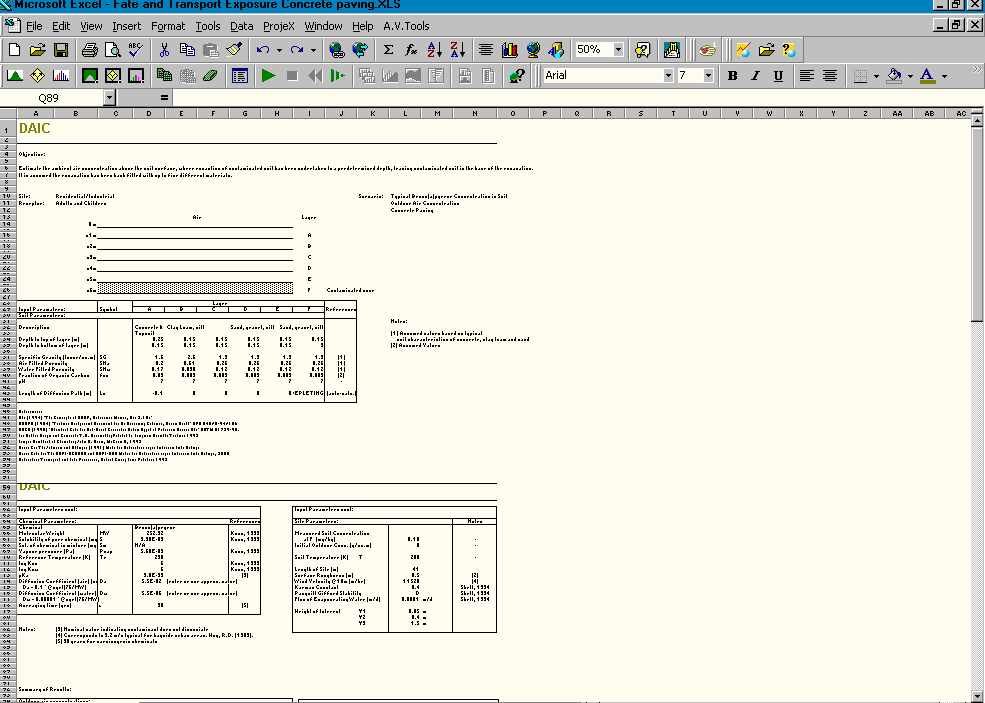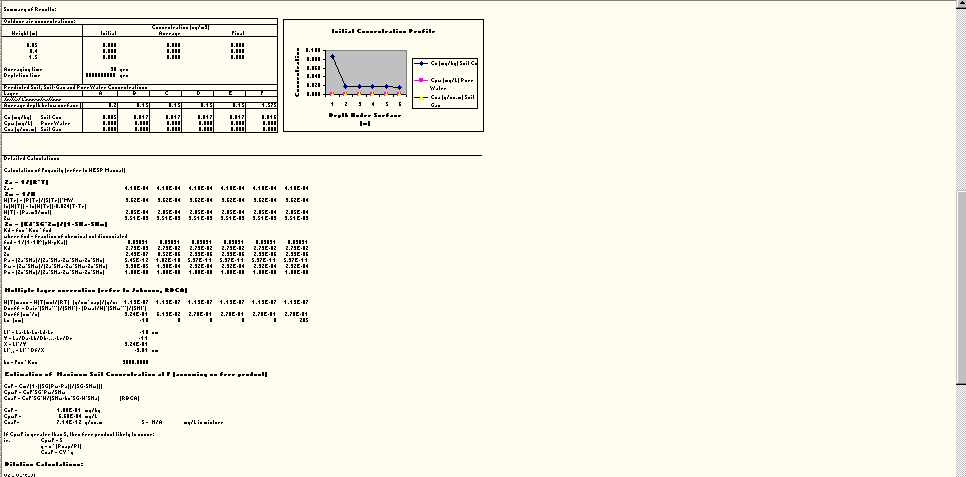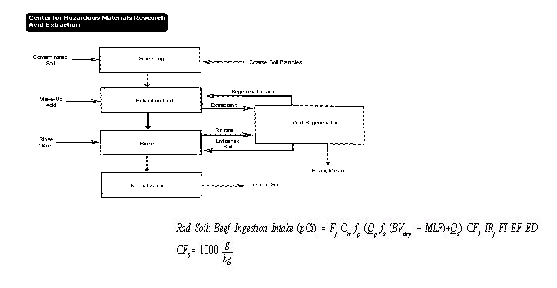


Risk Assessment /Risk Management– Liability Management Services
Two Compelling Reasons to Employ
Risk Assessment
First, it has been proven to provide a means of avoiding the cost of remediation when it can be used to demonstrate that a significant risk to human health and or the ecological system or environmental does not exist. Second, when remediation is required, it can reduce the time and cost of cleanup by providing a scientific basis for establishing realistic cleanup goals.
Environmental contamination problems between the need to remove a potential health or ecological hazard and the limitation on resources, which every business or public agency must live with. At DAIC, our risk assessment /risk management– liability management support services can help you determine whether an unacceptable risk is posed to human health, the ecological system or the environment.
Frequently, we can clearly establish that no risk
Exists, in which case we can assist you in demonstrating compliance without the need for remediation. In those cases where a risk does exist, we can help you control remediation cost by quantifying the extent of cleanup necessary to meet acceptable public and environmental exposure limits. By using, proven computerized models matched with professional expertise, we can accurately predict the potential and/or actual chemical concentrations in soil, water, and air.
Regulators accept risk assessment.
In the past, the best available technology usually determined the remedy to obtain the lowest level of contamination, regardless of cost, and often-included physical removal of contaminates to a landfill and/or incinerator.
However, risk assessment over the last decade, has gained wide acceptance among regulators in various countries (EU, USA, Canada, Australia, China, and New Zealand) at all levels. Today, both federal and state agencies use these scientific and statistical evaluation tools to provide more flexible remediation goals, as opposed to mandating remediation to arbitrary cleanup levels.
The power of employing risk assessment to prevent unreasonable expenditures has broad economic implications as industry and government regulators address environmental priorities.
Increasingly, regulators are using risk assessment to maximize the effectiveness of resources allocated to remediation. Risk assessments are conducted routinely, for example at Brownfields, Remedial Investigations, RCRA and Superfund sites. Many state agencies are also accepting risk based cleanup goals to address the most critical problems, and produce more rapid and cost effective cleanup, particularly under the constraints of state-funded remediation programs.
Risk assessment combines information on chemical exposure pathways and toxicity to determine the probability of risk to humans, ecosystem and the environment presented by hazardous materials.
The step by step risk assessment analysis evaluates the likelihood of exposure and its impacts on the individuals and sensitive ecosystems. Five (5) major aspects of a risk assessment include:
The product of such a study is an objective, scientifically (stochastic modeling) credible basis for evaluating appropriate remedies for a specific site.
![]()
Chemical/Radioactive Mixed Hazardous Waste Sites

Ecological Risk Assessment
State and federal agencies have recently begun to enforce environmental cleanup. As a result, the regulated community is faced with immediate responsibility of satisfying concerns regarding health of fish, which are biomarkers for some ecosystems. However,
biomarkers are seldom useful for estimating risks by themselves. The inference begins by asking if the levels of the biomarkers significantly differ from those at reference sites. If they do, then it is necessary to determine whether they are diagnostic or at least characteristic of any of the chemical of potential ecological concerns (COPECs), or of any of the habitat factors that are thought to affect the endpoint biota. If the biomarkers are characteristic of contaminant exposures, then the distribution and frequency of elevated levels must be compared to the distributions and concentrations of contaminants.Such an approach is technically known as a "Top Down" approach to assess the effects of chemical or physical stressors on the most sensitive top-level consumer species in a specific ecosystem. This approach, and toxicity testing to confirm adverse effects and identify toxic constituents, are effective tools in clearly defining nebulous claims.


The above are pictures, detailing potential human and ecological receptor exposure end points.
Toxic Torts Litigation Support
DAIC’ professional staff has assisted more than a dozen firms, including federal agencies, in their efforts to win toxic torts cases. DAIC ' approach to litigation analysis identifies relevant toxicological issues in the form of concise and focused written and oral reports that integrate pertinent findings from scientific literature, expert reports, medical records, other case materials, depositions (state guided) and providing superior negotiation support. DAIC can be your scientific resource to locate critical information and expertise, that formulate exhibits or document scientific arguments that illustrate the best science and expose weak or incorrect environmental theories and their applicability.
Environmental Fate and Transport
Understanding and quantifying the environmental fate and transport of contaminants is an integral part of the exposure assessment step of the risk assessment process. Through the use state of the art computer applications, DAIC has the ability to model groundwater, leachate, soil vapor, and the air transport of contaminants. DAIC staff members perform migration potential evaluations by using laboratory testing to determine actual leaching potential and other media partitioning coefficients to calibrate the models to real data. This approach produces the most accurate predictions.
DAIC Fate and Transport Processes
The principal purpose of fate and transport modeling is to predict and quantify migration of constituents in the environment that are subject to one or more transport mechanisms. For example, within ASTM and state RBCA programs, fate and transport modeling is one of the tools used to establish exposure point concentrations and their corresponding risk-based screening and cleanup levels. Fate and transport models are used to predict the migration of chemical constituents through soil, groundwater and air (or a combination thereof) over time, with most models focusing on specific fate and transport processes. Fate (i.e., chemical) processes address persistence of a constituent along the migration pathway while transport (i.e., physical) processes address mobility of the constituent along the migration pathway. The processes incorporated into DAIC ' fate and transport models include:
Chemical Source Fingerprinting

Monte Carlo Quantitative (Uncertainty Analysis)


Physiological Based Pharmacokinetic (PB-PK) Modeling
Understanding pharmacokinetics, or the movement disposition of chemicals within research animals (i.e. toxicology) and humans (epidemiology- pathology), is critical to interpreting the dose-response relationship in the course of conducting risk assessments. In order to understand the relationship between the external "dose" (intake) of a chemical estimated from the exposure assessment (uptake to target organs) step, and any adverse affects, such as tumor production, one needs to calculate the delivered dose. This technique uses PB-PK models to account for non-linear discrepancies within a biological system that can affect internal dose, making them valuable tools in dose response assessment. This technique is readily recognized by the scientific community and the USEPA, as aids in reducing uncertainties in the risk assessment process and allows more appropriate and scientifically valid estimates of risk.
KEY SUPPORT SKILLS
Customer service. Experience in project management of environmental health assessment, land use management assessment, due diligence, BRAC and Brownfields support, property acquisitions support, ecological risk impact assessment and risk management contract projects. Responsible for proposal writing, project budgeting and fiscal management. Coordination and program management, matching bidding requirements on Request For Proposals (RFPs). Providing mentor leadership/management on ecological stochastic (statistical delineation) risk assessments; environmental toxicology profile development, environmental auditing of industrial facilities and land use analysis; contaminated site assessment and clean up goal analysis; senior technical advisory and project management on hazardous waste management/toxicology, remedial and facility investigations, remedial actions and decisions, ecological impacts, health impacts, wetlands delineation, clean up actions/goals (water quality; treatment of water/wastewater and industrial waste; air pollution) and automated information systems software design and development. Developing 2 D regulatory models capable of simulating conditions encountered at the respective site and the appropriateness of selected model platforms:
Analytical models:
Field data showing groundwater or air quality flow or transport processes are relatively simple. A one-dimensional groundwater flow or air quality flow transport models:
Two-dimensional models:
Three-dimensional flow and transport models:
DAIC provides groundwater screening modeling for chemical/radionuclide fate and transport, as well as constituent vapor air concentrations. DAIC provides assistance with ModFlow data mapping and parameter attribute selection.



Examples of DAIC' Modified Johnson and Ettinger/NAPL Vapor Screening and SCM models
DAIC HAZARDOUS WASTE TRAINING AND ENVIRONMENTAL AUDITING PRACTICE AREA
Subtitle C of RCRA - Managing Hazardous Waste
/MaterialsThe improper management of hazardous waste and materials are probably the most serious environmental problem in the United States. Mismanagement of hazardous substances and waste can add to and does cause tragic consequences. The USEPA and several state government agencies have on file hundreds of cases documenting adverse effects to human health or the environment resulting from indiscriminate dumping, releases, and discharges or other improper management of hazardous waste. In many of these cases soil, air and groundwater samples were badly contaminated with toxic or cancer causing chemicals and/or heavy metals (e.g. lead, chromium etc.) impacting or inflecting food sources. Other tragic cases, are recorded where residents were not aware of the contamination or potential exposure continued to either ingest (i.e. drink/eat), inhale (i.e. breath) which resulted in serious health effects.
Vaporization of organic materials and dust particulates released from waste sites improperly maintained and/or disposed of have been linked to respiratory illness, skin diseases (including skin cancer) and elevated levels of toxic materials in the blood and tissue of humans. Mismanagement of hazardous waste has resulted in fires, explosions, or generation of toxic gases that have killed or seriously injured company workers, police and fire-fighting personnel.
The Subtitle C program developed under RCRA (section 3001 3019 of the ACT) is designated to ensure that any mismanagement does not continue. The federal "cradle to grave" management system sets forth statutory and regulatory requirements for:
DAIC develops and conducts site specific emergency response (ER) and contingency course training plans for private industry and the US military. DAIC has the necessary skills to keep your company in compliance with the regulatory community and aid in your company’s emergency response public relations consideration. The following is a summary of our experience:
DAIC audit process reviews your organization's Hazcom and Hazwoper profiles. The following is an example of our unique process:

DAIC’ audit techniques exam your current processes, then our logic model reveals any potential adverse effect that might be derived from those processes. At the end of the process, we provide you with solutions and/or recommendations.
History of Experience
DAIC staff members are considered leaders in fields of human health, statistical analysis, logistic control, quality assurance/control, financial management, public health and ecological assessment and environmental health engineering. DAIC senior staff members have served as Risk Assessment and Risk Management Managers (Senior Environmental Toxicologist, Systems Analyst and Environmental Engineers) responsible for business development, environmental security, regulatory compliance and project technical support management for CDM (Federal Program i.e. CDM); at EGIS Consulting Services, Mortimer Sweeny Inc., SEARS, Bankers Trusts, New Jersey Dept. of Land Use Management, BCHD, Earth Sciences Consultants, EBASCO/Enserch, Anteon Corp, University of Cincinnati and Chester Environmental, experience which has encompassed:
Contaminated Use Land Assessments and Clean Up:
Responsible for direction of hundreds of contaminated site assessments including many major investigations for United States military installations, energy industry (nuclear, petrochemical, cogeneration), steel facilities, Superfund and municipal landfills, timber/wood treatment sites, gasworks, agricultural products (fungicides, rodenticides, insecticides and herbicides), petroleum industrial and general manufacturing; conducted many facility site investigations, environmental audits of contaminated land and properties in Brownfields acquisitions; and technical health impact advisory and statistical analysis on major clean ups including Superfund, resource recovery facilities, energy power plants, airports, wetlands delineation, gasworks and timber treatment sites.Environmental Health Risk and Ecological Assessment and Management:
Responsible for advising government (AUSTRALIAN (NSW), NEW ZEALAND, USEPA, USCG, USACOE, USDoD, US Navy, NRC, USDOE and various US state agencies) and industries on environmental health risk assessment and management issues; development of national and state environmental health assessment policy guidelines for industries and industrial wastes in United States of America; large number of environmental audits of major manufacturing plants and other facilities; permit approvals and licensing for major industries; and human health, ecological and environmental risk assessment for discharges to soil, water and air.Radionuclide Pollution (Air/Water/Soil) and Waste Management:
Responsible for leadership and development of radionuclide human health and ecological risk assessments; emergency contingency plans addressing air/water/soil media, pathway analysis and waste management controls; development of software systems for regulatory compliance.BRAC:
Responsible for supporting the Navy's multimedia environmental projects with SPAWAR in San Diego, e.g. RI/FS, DQOs, facility audits and human health and ecological risk assessment initiatives. Assisted in the development of 63rd Army Reserve’s Solid Waste Management Plan and oil and water separator risk assessment. Developed EMS business plan and radionuclide risk assessments. Development of Coast Guard proposals for a Environmental Assessment with Basin and Channel Dredging in OR. Development of US Forest Service ‘s EE/CA proposal in AZ. Responsible for the revision of four risk assessments supporting the USAF and US Navy and USEPA in response to DTSC and Cal/EPA considerations. Conducted third party risk assessment reviews on Groundwater Technology, IT, Roy F. Weston, Brown and Root, Tetra-Tech etc.. assessments in response to client and agency concerns/request for response and/or correction (USEPA/DTSC).DAIC staff members have assisted the US Army at Fort Dix, NJ's command and its reserve stations/centers in resolving their remedial environmental risk impact and regulatory compliance considerations: wastewater, noise control and complaints (public relations), radon inspections, radionuclide inspections and assessment, UST/LUST, CWA, SDWA, Brown fields (contracts with state government agencies and permit review with financial institutions" lease considerations"), hazardous material/waste management, emergency response, ecological impact assessments, CERCLA, RCRA, medical waste, NEPA, EIS/EIA, incinerator usage and waste management, and on site internal auditing (via a contract vehicle).
Industrial Waste and Wastewater Treatment:
Senior adviser for cleaner production, waste minimization and treatment; investigation of ecological and environmental health impacts and engineering design of treatment plants for bulk liquid and industrial aqueous and organic waste; and many systems for industrial waste and wastewater treatment including chlorinated organics, and hazardous waste incineration. Responsible for supervisory and inspection of waste water treatment facilities and sanitary landfills.Air Pollution:
Responsible for project management and technical advisory of air pollution investigation and permit investigations; health risk impact modeling investigation and senior technical advisory on design development of a large number of industrial air pollution control facilities, hazardous waste incineration systems and municipal wastewater odor control. Conducting air inventory analysis and site inspections on various types of facilities emitting noxious/ toxic fumes, gases and odors.Water Treatment:
Senior adviser on water quality projects especially relating to water quality impact and treatment process requirements; audits of major urban and rural water authorities for regulatory purposes; risk management of drinking water quality; investigation and health impact on design of many major potable and industrial water treatment plants including new process research and development, and pilot investigations leading to full scale plant design; project leader of research projects on drinking water quality. Responsible for site inspections and sampling/analysis of water treatment facilities for drinking water.Regulatory Compliance Negotiations: Providing senior level advisory during sensitive regulatory compliance negotiations, applying our strong interpersonal relations and communications skills. DAIC staff members are recognized by private industry and government clients for their consistent success in team building and project success. Active in various levels of legislative affairs and agencies over the past 14 plus years, DAIC' staff has built strong working relationships with regulators, that have proven to be a significant value to our clients.
.
HOME
![]() BIOSTATISTICS
BIOSTATISTICS ![]() RELIABILITY
RELIABILITY ![]() PARALEGAL
PARALEGAL